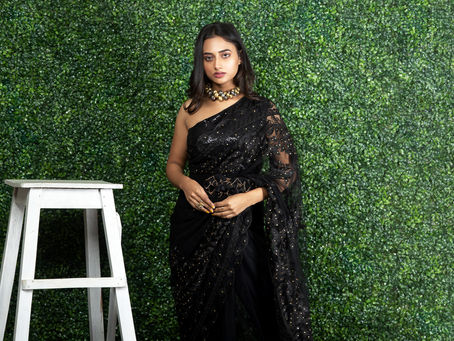top of page
Search
All Posts


Choosing the Right Saree for Your Personality
A saree is more than attire—it's a reflection of who you are. But how do you find the one that truly feels like you ? Elegant & Reserved?...
Prerna Sinha
Jun 181 min read


Kantha – Stitching Stories Through Thread
Kantha embroidery is more than a craft—it’s storytelling passed through generations. Originating in Bengal, Kantha involves simple...
Prerna Sinha
Jun 181 min read


Organza Sarees – Sheer Elegance for Every Occasion
There’s something ethereal about organza. Lightweight, sheer, and delicately structured, organza sarees are perfect for those who want...
Prerna Sinha
Jun 181 min read


The Story Behind Madhubani Sarees
Every Madhubani saree is a painting, a poem, and a piece of history. Originating in the Mithila region of Bihar, Madhubani art was...
Prerna Sinha
Jun 181 min read


5 Ways to Style a Cotton Saree for Summer
Cotton sarees are not just a summer staple—they’re a statement. Light, breathable, and effortlessly elegant, they adapt to every...
Prerna Sinha
Jun 181 min read


The Timeless Beauty of Silk Sarees
Silk has long been the queen of fabrics, especially in Indian culture. Whether it’s the shimmering Kanjivaram or the delicate Banarasi,...
Prerna Sinha
Jun 181 min read


How to Care for Your Urbane Essence Sarees: Preserve the Magic
Keep your heirloom-quality sarees timelessly elegant with expert care that protects both fabric and sentiment. Why Proper Care Matters...
Prerna Sinha
Jun 182 min read


Discover Traditional Indian Sarees at Urbane Essence
Welcome to a unique journey through the rich tapestry of Indian culture and heritage at Urbane Essence, an exclusive online platform that...
Prerna Sinha
Mar 72 min read


Explore Global Indian Fashion with Urbane Essence
Are you someone who appreciates the rich cultural heritage and artistry of Indian fashion? If so, Urbane Essence is a must-visit...
Prerna Sinha
Mar 72 min read


Shop Handcrafted Sarees from Skilled Indian Weavers
Are you a global Indian woman looking for exquisite handcrafted sarees that celebrate the rich cultural heritage of India? Look no...
Prerna Sinha
Mar 71 min read
bottom of page
